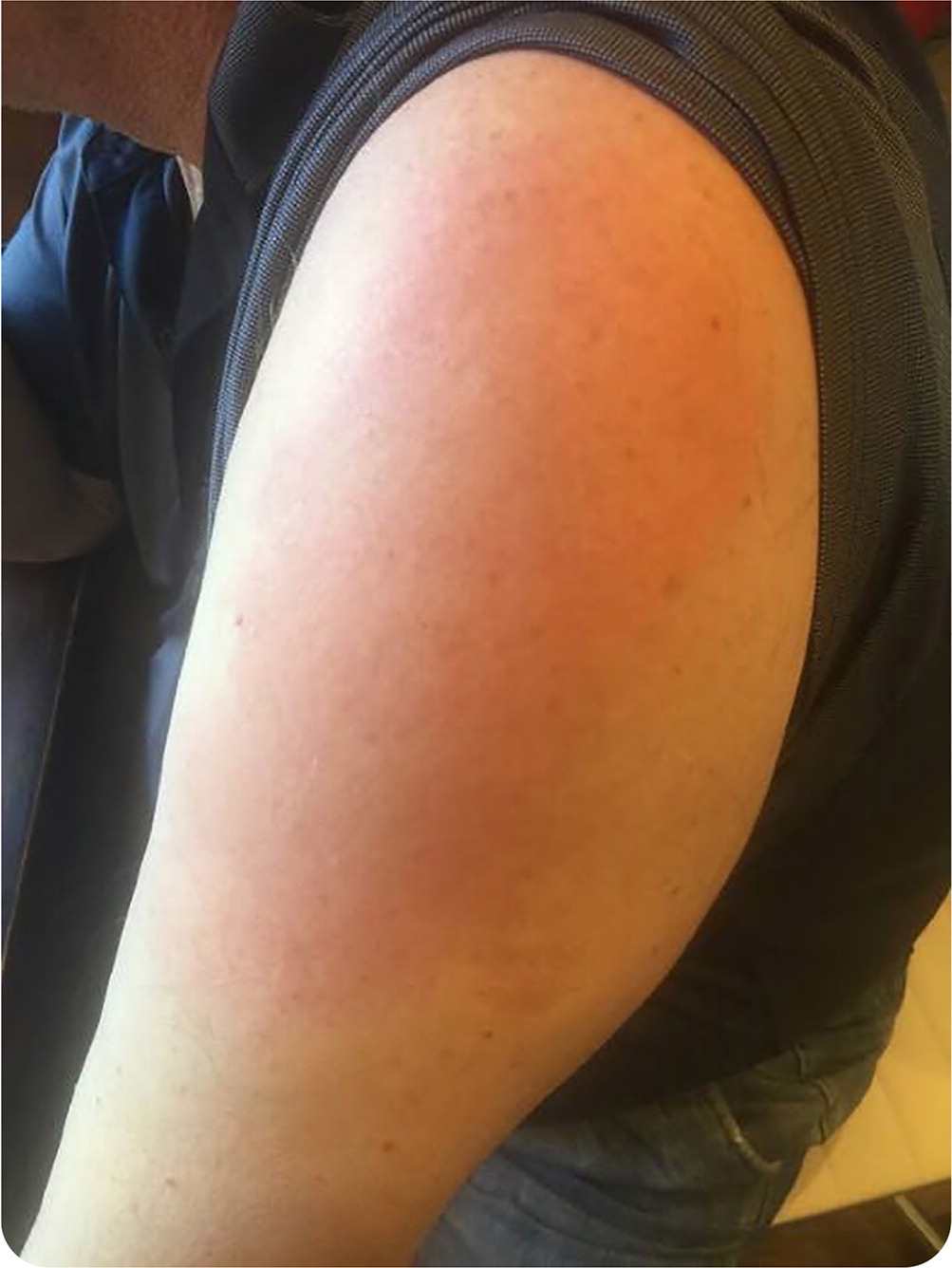
Am Fam Physician. 2021;104(1):81-82
Author disclosure: No relevant financial affiliations.
A 71-year-old patient sent a portal message through the electronic medical record with a picture showing a new rash on the arm. The patient had received the first dose of the mRNA-1273 vaccine against the SARS-CoV-2 virus, which causes COVID-19, in the affected arm about two weeks earlier. Initially, the patient had noticed a typical immune response reaction, with mild headache and muscle aches that lasted for about 48 hours. The rash developed suddenly two weeks after receiving the immunization.
On physical examination, the lateral aspect of the left upper arm was mildly warm and rough, with redness and pruritus (Figure 1). Over-the-counter hydrocortisone 1% cream provided some relief of the itching. The area was not painful, and the patient did not have a fever.

Question
Based on the patient's history and physical examination findings, which one of the following is the most likely diagnosis?
A. Cellulitis.
B. Delayed local reaction.
C. Psoriasis.
D. Tinea corporis.
Discussion
The answer is B: delayed local reaction. Immediate injection site reactions are common following immunizations, but a delayed local reaction appears to be a phenomenon associated with the mRNA-1273 vaccine. In clinical trials for the vaccine, which is manufactured by Moderna, immediate site reactions were common (84% after the first dose), but delayed site reactions were rare (0.8% after the first dose and 0.2% after the second dose).1
Because this is a new vaccine against a novel coronavirus, there is little previous experience with possible reactions. A recent case series described 12 patients with similar delayed reactions.2 These patients developed an area of erythema and warmth around the injection site after systemic symptoms from the vaccine had resolved. Most of the rashes were large (greater than 10 cm in diameter). Patients were treated symptomatically with ice or antihistamines, and many received topical or oral corticosteroids. Symptoms resolved after a median of six days.2
This type of reaction is thought to be a delayed-type, T cell–mediated hypersensitivity. This patient questioned whether they should proceed with the second dose of the vaccine. However, neither initial nor delayed local reactions are considered contraindications to vaccination.3
Cellulitis is an infection involving the skin and underlying superficial soft tissues.4 It presents as erythema and warmth but is nonfluctuant and associated with limited systemic symptoms unless an abscess develops. Streptococcus and Staphylococcus bacteria are common causative organisms. Cellulitis responds well to outpatient treatment with oral antibiotics.4
Tinea corporis presents as scaly, erythematous, annular plaques with raised borders.5 As lesions spread outward over time, central clearing occurs. Although most cases can be diagnosed based on appearance alone, a potassium hydroxide preparation from the scaly outer aspect of a lesion can show confirmatory hyphae on microscopy.5

| Condition | Characteristics |
|---|---|
| Cellulitis | Erythema and warmth; nonfluctuant |
| Delayed local reaction | Erythema and warmth; onset one to two weeks after vaccination |
| Psoriasis | Silver plaques on extensor surfaces; lesions bleed easily with trauma |
| Tinea corporis | Scaly, erythematous, annular plaques with raised borders that spread outward with central clearing |
